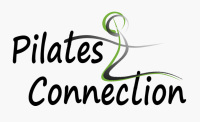Frequently asked questions
What is Pilates ?
Joseph Pilates started to create his method while being a German national in an internment camp in England during WW1. It is said that he devised a system of springs to be attached around a hospital bed to help injured men rehabilitate and that this was the beginning of the apparatus called the « Cadillac ». He emigrated to New York in the early 20's where he developped his method, which he called Contrology.
The exercises focus on finding and developing strength from the deep « core » muscles of the back, abdominals, buttocks and pelvic floor. These muscles are called the "powerhouse" in Pilates jargon. We learn how to use the mind to control and rebalance our muscles in order to maintain optimal posture in all positions.
The goal of the exercises (of which there are more than 500) is to strengthen the muscles that are too weak and release the muscles that are too tense all while our attention is drawn to thoracic breathing and correct alignment of the spine.
Who is it for ?
Everybody can practice Pilates because the exercises are adapted to the needs of each person. The exercises are chosen either to challenge professional athletes or help someone get back into movement after a serious injury or childbirth. Pilates is particularly recommended to anyone suffering from stress, fatigue, stiffness or chronic pain due to bad posture. There is no age limit !
For pregnant women, especially in the second or third trimester, the APOR method by Dr. De Gasquet is better adapted to the specific needs of this particular moment in a woman's life. Being a certified APOR instructor, I can propose many safe exercises all throughout the pregnancy..
What do I need to practice Pilates ?
Comfortable clothing, no shoes (either in socks or barefoot). Many exercises can be practiced on a simple mat at home. While in the studio you can benefit from all the apparatuses and accessories available to help you better understand the work.
What frequency ?
Generally speaking one class per week is necessary to progress. Two or three classes a week would allow faster progression. In most cases it is unnecessary to participate in more than three classes a week. This is a subject to be discussed between the student and teacher based on the student's needs, goals, available time and budget.

